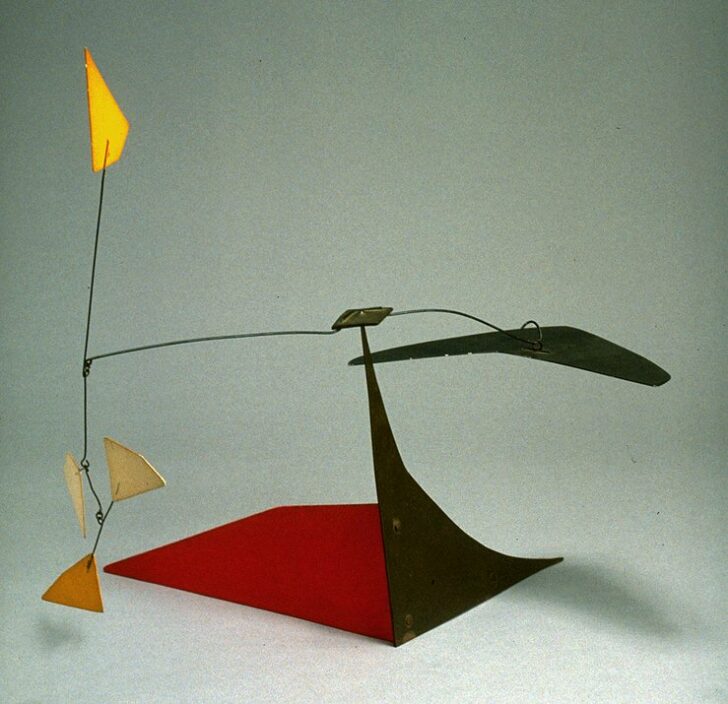Black Boomerang and Polygons
Alexander Calder

Description
March 28, 2009
Calder was born in a suburb of Philadelphia to a family of artists. In 1919 he graduated with a degree in mechanical engineering, but true to his legacy, he turned to painting and sculpture. His technical training, however, would play a central role in his artistic development. In 1931, interested in exploring the interplay between mass and volume, and light and shadow, Calder produced his first kinetic sculpture; its erratically spinning parts and delicate collage-like construction were in stark contrast to the solid and static nature of traditional sculpture. His friend, the artist Marcel Duchamp (1887–1968), named these tin and wire constructions “mobiles” (later that same year, artist Jean Arp coined the term “stabile” to apply to Calder’s non-moving works). These signature mobiles had their beginnings over a decade earlier in Cirque Calder, a complete miniature circus with diminutive props fashioned from wire and found materials, and designed to be manipulated in the manner of marionettes. Calder’s works range from small, maquette-sized objects, such as Black Boomerang and Polygons, to enormous sculptures that can be found in public spaces around the world.
Subject Matter:
The abstractionist's interest in the rhythm and motion created by the way shapes, lines, and colors interact with one another is here put in actual motion in the form of a mobile.
Physical Description:
A base composed of a red section that lies on the floor and a black section that rises to narrow point. On the point rests the moving part of the "mobile"--one arm extends out and ends in a black boomerang; the other extends out then attaches to a vertical arm that has yellow polygons on either end.
Usage Rights:
If you are interested in using an image for a publication, please visit https://umma.umich.edu/request-image/ for more information and to fill out the online Image Rights and Reproductions Request Form.